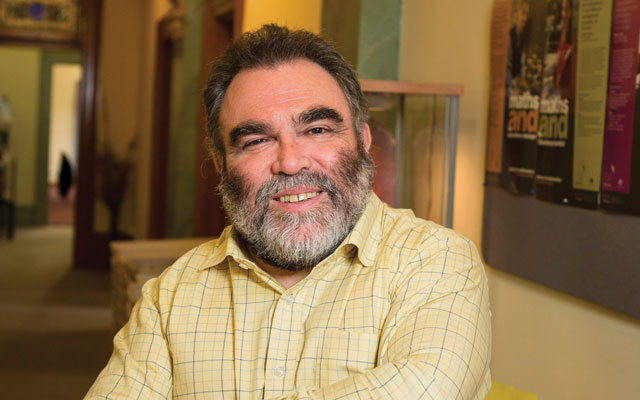Having spent more than 30 years managing many industry associations, Simon Pryor – now CEO of the Mathematical Association of Victoria – has seen how a changing macro environment is giving associations their biggest challenge yet in growing membership. He tells what must be done and how he has made relevant changes successfully
Belinda Moore, CEO of Australasian Society of Association Executives (AuSAE), wrote in her popular paper, Membership is Dead: “A number of powerful generational, cultural and economic forces are colliding to create a perfect storm that will make the next five to 20 years some of the toughest ever faced by associations.” I’d like to ask you, is membership is dead?
I have to say that my own experience of recent times back this up. The world over, associations were formed, structured and focused on the needs of the baby-boomer generation. Associations were built in the ’50s-70s and the baby-boomers have been in the associations in the ’80s, ’90s and early part of this century. But now they are retiring, so we either face change or death. Those associations that don’t change or adapt will find someone else taking their place.

So that’s the generational issue.
Yes, don’t forget the baby-boomer generation is such a large generation. The associations were constructed with them in mind. To begin with, there is a skills shortage because as these people retire, there are less people who are committed to running associations, people who know how to run the board, how to handle volunteers, how to do the work of the trade or represent the trade or profession. As they retire, associations that don’t start to shift their purpose and focus, and stay focus on the baby-boomers are at threat.
How do you suggest they shift their focus?
To start, we need to understand what the younger people are looking for in support of their profession, what their interests are, how they want to make a career for themselves or build their business.
Look at student associations from universities around the world. The thing that stands out about them is, no matter how they are structured, they are incredibly connected. The other thing that stands out is they are set up to deliver value here and now.
But do young people necessarily want to join associations?
What they are looking for is different from what I was looking for when I was young. My parents told me I’d have one career, one job, one bank and my loyalty would be rewarded. And when I’m older I can give back to society.
The world has changed so rapidly. The younger generation is saying I need support now. And I’m not going to have one job. My daughter is doing a job that didn’t exist when she went to university and she went to university only a few years ago.
Young people also regard transactions differently. They may pay a premium price for a product but will not stick with it for life. Today, there are just so many options available to them. They are like magpies, you know, always drawn to new and shiny things.
So they need to see value right here and now.
Are associations able to deliver value right here and now? Wouldn’t that be a difficult shift to make if, for one, their structure is not set for it?
It is difficult but it is essential – otherwise you’ll be dead. Someone else more nimble, flexible, more able to engage that market will take your place and represent your industry or profession.
I have an example. In the business events sector in Australia, there used to be the Meetings Industry Association of Australia or MIAA. Overnight, a new association, PCO Association, started with free online membership and suddenly PCOs were connected online with emails, webinars and so on. The new association got rid of the bureaucracy a traditional association has; it only has a small board, a small secretariat, and everything else is contracted out.
So you have a traditional body with state branches and committees, with people serving on working parties and running events, etc, facing a threat from a much more nimble and progressive association entering its space.
MIAA then evolved into Meetings & Events Australia or MEA, and the fact MEA has survived and kept its membership base tell me it has adapted.
Do you find that it’s easier to replicate an association now compared with before?
It’s a question of value. What an association has to learn is that the new member is saying, ‘I want value’, and they would go to anybody that delivers that value. So the competition can be a for-profit, whereas that would be unthinkable 20-30 years ago where for-profit did not exist.
Even here (in Shanghai, where the interview was conducted during the recent IT&CM China), a lot of associations are at a point in their development where they could face similar threats. A lot of them are endorsed or mandated by the government, which is great of them, but they must not assume that just because of that link there won’t be other people in the marketplace delivering services to their members.
What else do associations need to do, apart from understanding changing membership needs, being incredibly connected and being able to deliver value instantly?
We need to shift our approach, from a ‘we know everything about our trade or profession’ to a ‘we can help point you in the direction of the knowledge or information you’re looking for’.
Today, I can learn anything by just googling. I don’t need an association to teach me how to fly an aeroplane.
In the ’80s and ’90s associations said they were a repository of all knowledge about their industry and profession. No longer. Our capacity to access knowledge has just grown with the digital age, so what an association needs to be is become the curator, be able to tell members that, of all these websites which can tell you how to fly an aeroplane, these are the best. And it’s not necessary the association’s website.
Should associations rethink the way they communicate with their members and deliver content at their events too, seeing how younger professionals are more tech savvy?
Social networking is pervasive today but many associations are still fearful of taking that leap and making use of social media. Honestly, studies (on the effectiveness of social media) are not giving associations a compelling reason to dive in right away.
There is a lot of talk now about hybrid meetings (which offer a combination of live and virtual content), but again, there is no clear evidence that people are actually willing to sit at the computer and watch an hour-long static presentation. Still, some association content is being delivered this way. I think associations need to study hybrid meetings carefully before employing this model.
While trying to better engage the younger generation, associations must remember that older members have different preferences for content delivery and their needs must still be respected.
Researching and understanding the varied profiles of all members, young and old, will enable associations to make the right changes that will deliver value to everyone.
As CEO of the Mathematical Association of Victoria, Australia, what are you doing to stay relevant?
We’ve had to work out how to use technology to reach our members wherever they live and work. Australia is a very wide land and sparsely populated so our staff, in support of mathematicians, have had to travel maybe a whole day just to meet five members, which is incredibly expensive and difficult.
So we’re embracing video-conferencing, Skype and social media as a way of reaching out to those members, and it’s not just a one-way thing. Technology allows us to connect with a whole range of people in a sort of a web and we don’t have to be at the centre of that web anymore; we can just be the connector.
Are you seeing increased membership in your association?
Well we’re retaining membership and we’ve broadened the reach. We provide membership benefits to over 10,000 teachers and that hasn’t changed. We benchmark ourselves and we do know that some associations over the last few years serving other professional areas similar to us have in fact experienced a membership loss.
The other thing we have learnt is we have to talk to our members and let them talk to us. So we’ve been serious about surveying members and about responding to what it is they tell us they need.
And are you getting new younger members?
Yes, I’m pleased to say. It is not just getting them though, you’ve got to make the members a part of the association, which means they need to be on the board. Too many boards and too many associations across the world have a fat structure and old, ageing, overweight (board members) that are not reflective of the membership.
If you a see a nimble association that is responding to the future, you’ll find young people on the board. Instead of committees that go on forever and ever, there’ll be working parties that have a clear job, a start point and an end point, because that’s what young people are looking for.
Was there a trigger point that forced you to change?
The hallmark of any good association is you have to be observant and listen. I supposed it’s easier to say ‘Oh, we’re just losing a few members every year, they’ll come back’ and stick your head in the sand. What we needed to understand was that the change was on. The sea change was when I listened to Belinda and thought, yes, her research is telling us something important. So I went on looking at what it meant for our association. I can see many of the factors she was raising in a broad sense and realised I had to respond or I’d be out of a job.
Well thank you, it’s good you still have your job.
Yes, I’m very pleased too (laughs).













